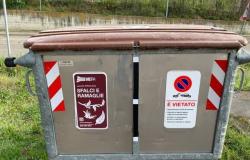With over 700 days of delay and after two unsuccessful drafts, the Ministry of the Environment – in concert with the ministries for Culture and Agriculture – has produced a new draft (attached) of the decree for the identification of areas suitable for renewable plants.
Time is running out, given that the provision will have to be formalized by the end of June to meet the milestones of the Pnrr; the new draft was formulated on the basis of the observations that emerged from the Environment commission of the Conference of Regions, led by Alessandra Todde’s Sardinia Region, which as soon as it took office launched an 18-month moratorium on new renewable plants.
The worst viaticum to restart the legislative process, but also for this reason the new draft strengthens the role of the Regions in identifying suitable areas, a point that the Tuscan Councilor for the Environment, Monia Monni, has also been insisting on for some time.
Firstly, the draft decree on eligible areas revises the burden sharing figures, i.e. the distribution between the Regions and autonomous Provinces of the national 2030 objective of an additional power equal to 80 GW from renewable sources compared to 31 December 2020 , as foreseen by the National Integrated Energy and Climate Plan (Pniec, also to be updated by 30 June).
Little changes for Tuscany: there is talk of installing 4.25 GW of new plants by 2030, compared to 4.212 GW in the first draft. A target that remains far from the 10.4 GW requested from Sicily, the 8.7 GW in Lombardy or the 7.3 expected in Puglia.
What changes is the rest. Within 180 days of the entry into force of the decree with the respective general criteria for identifying suitable areas – for example a buffer zone from the perimeter of the assets subject to protection of 3 km for wind farms of 500 meters for photovoltaic ones – it will be up to to the Regions to delimit suitable and unsuitable, ordinary and prohibited areas in their territory; if the objectives are not respected, the Presidency of the Council of Ministers will be able to act with the replacement powers.
The draft decree is now awaited in the Unified Conference to continue the legislative process, but time is running out: less than a month remains before the deadline imposed by the Pnrr is exceeded.
Meanwhile, renewables continue to struggle: to reach the decarbonisation objectives for 2030, +12 GW of renewable plants per year would be needed, while the first quarter of 2024 stopped at just +2.3. So much so that, according to Legambiente, if Italy continues at this rate, it will only reach the 2030 objectives in 2046.




